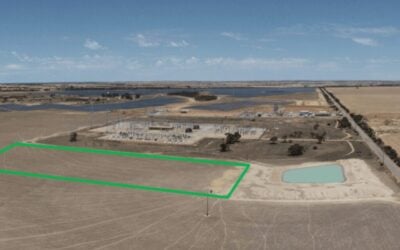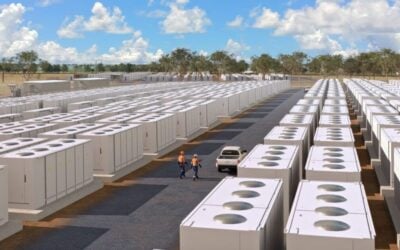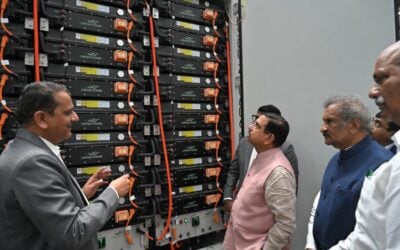Australia's capital, Canberra. Image: Flickr user: nsgbrown.
A renewable energy auction which could take Australia’s capital Canberra over the line in meeting a long-term “90% renewables” target will also lead to the deployment of 5,000 residential and commercial battery storage systems.
Known locally as the Australian Capital Territory (ACT), Canberra is hosting a reverse auction for 109MW of renewable energy capacity eligible for the feed-in tariff (FiT) paid to support the growth of clean energy. Once successfully awarded and online, the extra generation capacity would mean the region had secured its path to 90% renewables and a 40% reduction in greenhouse gases (GHG) by 2020.
Enjoy 12 months of exclusive analysis
- Regular insight and analysis of the industry’s biggest developments
- In-depth interviews with the industry’s leading figures
- Annual digital subscription to the PV Tech Power journal
- Discounts on Solar Media’s portfolio of events, in-person and virtual
Businesses participating in that main auction, which opened on Friday, will be subsidising the cost of the batteries, equating to roughly around 36MW. Local politician Simon Corbell, whose responsibilities in ACT include the environment and climate change, launched both programmes, as well as an AUS$600,000 (US$452,000) pilot of the storage systems last year.
“This auction will build on the success of previous auctions, but successful bidders will also provide an additional cash injection to establish a photovoltaic battery storage programme in the ACT,” Corbell said.
Participants in local renewable energy auctions are already required to put money into local communities. Corbell said around AUS$25 million will be provided for the storage systems, which will be rolled out over four years. Corbell claimed this would make it the biggest deployment of small-scale storage outside Germany.
“PV-battery storage will revolutionise the renewable energy sector by storing renewable energy so it is on demand exactly when we need it, reducing the need for network investment.”
The request for proposals for the batteries remains open until the middle of May.
Australian utility AGL recently invested in storage system maker Sunverge, which is trialling aggregated small-scale storage in 'virtual power plants'. Image: Sunverge.
Potential - and barriers - for behind-the-meter storage in Australia
There has been a great deal of recent focus on the potentially favourable conditions for behind-the-meter (customer sited) energy storage in Australia paired with PV. GTM Research recently said it expects residential energy storage numbers to “explode” into a 132MW annual market by 2020. A report from Australia's own Climate Council said solar and storage could revolutionise energy, while the Australian Renewable Energy Agency (ARENA) highlighted that the value of storage in the country begins with its enabling of solar self-consumption.
Flow battery maker Redflow has released a residential storage system, thought to be the first commercially available system based on the technology. Meanwhile utilities in the country appear keen to test the possibilities offered by using small-scale storage systems to provide network services such as demand response. For example, the country’s biggest utility, AGL, invested in Sunverge, a residential system maker that is providing systems based on batteries from Korea’s Kokam to trial their aggregated use, while three separate utilities are trialling Panasonic’s storage devices.
However, it also differs from region to region how well-supported renewables and new clean technologies like stationary storage are in Australian policy, with regional FiTs for solar phasing out over different timescales. As veteran solar installer Nigel Morris told Energy Storage News in February, the incumbent power industries are worried about the diminishing of network demand as a result of the growth in clean energy. Morris said that in two regions in particular, New South Wales and Queensland, “somewhere between 15-20% of state revenue comes from coal and transmission and distribution networks, so as you diminish demand you also diminish state revenue and the states can’t afford to give this away”.






